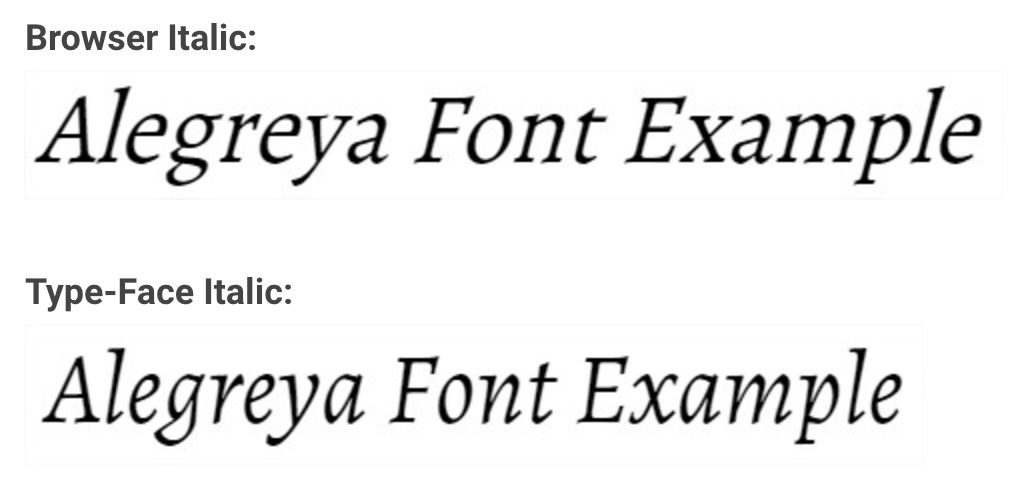Managing @font-face definitions with LESS
A typical @font-face definition looks something like this:
@font-face {
font-family: 'CustomWebFont';
src: url('customwebfont.eot');
src: url('customwebfont.eot?#iefix') format('embedded-opentype'),
url('customwebfont.woff2') format('woff2'),
url('customwebfont.woff') format('woff'),
url('customwebfont.ttf') format('truetype'),
url('customwebfont.svg#svgFontName') format('svg');
font-weight:normal;
font-style:normal;
}
Here we are defining the font's name, weight, style, and providing various file types for cross-browser compatibility.
If a web application is using different web fonts, or even a different weight/style (bold/italic) for the same web font, then this code has to be practically repeated several times.
This goes against DRY methodology and results in increased maintenance and management.
However, using LESS mixins we can abstract these properties making the definitions more readable.
Add the following to your LESS file:
.font-face(@font-family, @filepath, @font-weight, @font-style){
@font-face {
font-family: @font-family;
src: url('@{filepath}.eot');
src: url('@{filepath}.eot?#iefix') format('embedded-opentype'),
url('@{filepath}.woff2') format('woff2'),
url('@{filepath}.woff') format('woff'),
url('@{filepath}.ttf') format('truetype'),
url('@{filepath}.svg#svgFontName') format('svg');
font-weight:@font-weight;
font-style:@font-style;
}
}
Then, for the example above, this can be used as follows:
.font-face('CustomWebFont', 'customwebfont', normal, normal);
If we want to use 4 different type-faces for this web font then it is simply just 4 lines to write:
.font-face('CustomWebFont', 'customwebfont', normal, normal);
.font-face('CustomWebFont', 'customwebfont_bold', bold, normal);
.font-face('CustomWebFont', 'customwebfont_italic', normal, italic);
.font-face('CustomWebFont', 'customwebfont_bolditalic', bold, italic);
This would then output the following in our rendered CSS:
@font-face {
font-family: 'CustomWebFont';
src: url('customwebfont.eot');
src: url('customwebfont.eot?#iefix') format('embedded-opentype'), url('customwebfont.woff2') format('woff2'), url('customwebfont.woff') format('woff'), url('customwebfont.ttf') format('truetype'), url('customwebfont.svg#svgFontName') format('svg');
font-weight: normal;
font-style: normal;
}
@font-face {
font-family: 'CustomWebFont';
src: url('customwebfont_bold.eot');
src: url('customwebfont_bold.eot?#iefix') format('embedded-opentype'), url('customwebfont_bold.woff2') format('woff2'), url('customwebfont_bold.woff') format('woff'), url('customwebfont_bold.ttf') format('truetype'), url('customwebfont_bold.svg#svgFontName') format('svg');
font-weight: bold;
font-style: normal;
}
@font-face {
font-family: 'CustomWebFont';
src: url('customwebfont_italic.eot');
src: url('customwebfont_italic.eot?#iefix') format('embedded-opentype'), url('customwebfont_italic.woff2') format('woff2'), url('customwebfont_italic.woff') format('woff'), url('customwebfont_italic.ttf') format('truetype'), url('customwebfont_italic.svg#svgFontName') format('svg');
font-weight: normal;
font-style: italic;
}
@font-face {
font-family: 'CustomWebFont';
src: url('customwebfont_bolditalic.eot');
src: url('customwebfont_bolditalic.eot?#iefix') format('embedded-opentype'), url('customwebfont_bolditalic.woff2') format('woff2'), url('customwebfont_bolditalic.woff') format('woff'), url('customwebfont_bolditalic.ttf') format('truetype'), url('customwebfont_bolditalic.svg#svgFontName') format('svg');
font-weight: bold;
font-style: italic;
}



